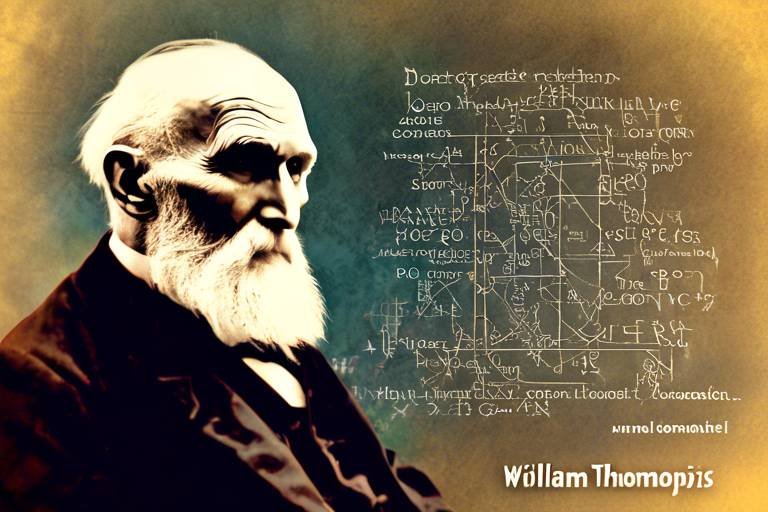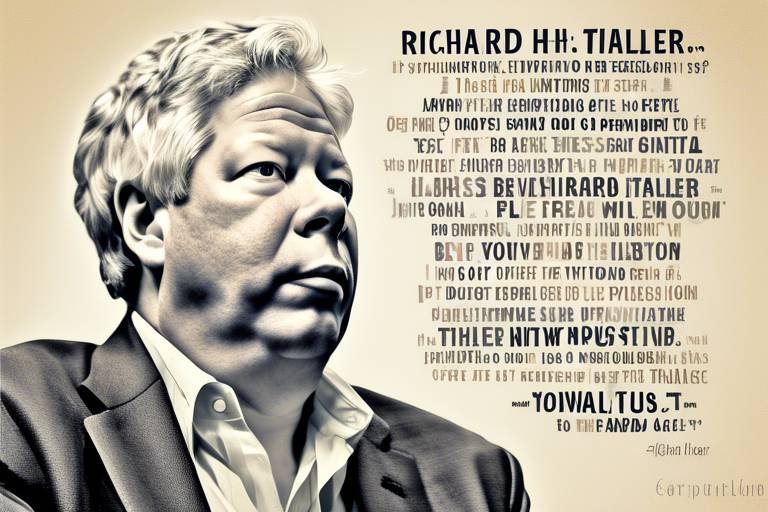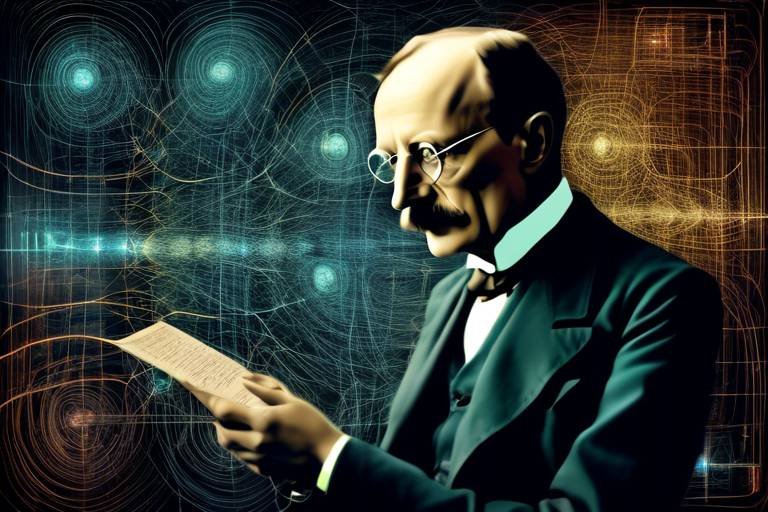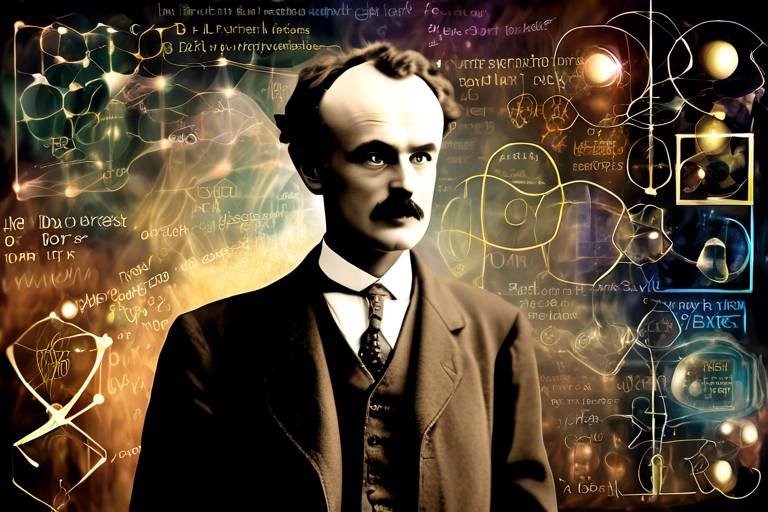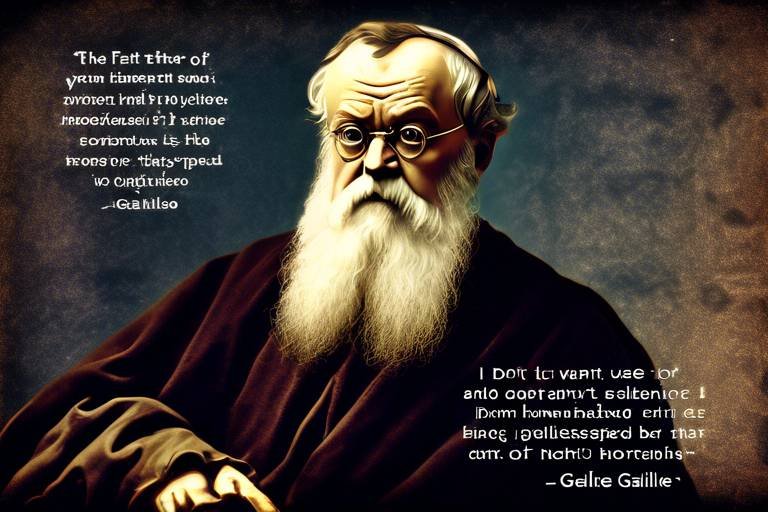The Discoveries of Hedy Lamarr in Frequency Hopping
This article explores the groundbreaking contributions of Hedy Lamarr to frequency hopping technology, highlighting her innovative spirit and the impact of her work on modern communication systems. Hedy Lamarr, often celebrated as a glamorous Hollywood actress, was also a brilliant inventor whose ideas were ahead of her time. Her journey into the world of technology not only reshaped her life but also paved the way for revolutionary advancements in secure communications.
Born in 1914 in Vienna, Austria, Hedy Lamarr was not just a pretty face; she was a curious and intelligent young woman. Her early exposure to the arts and sciences, thanks to her father, a successful engineer, sparked a lifelong fascination with innovation. After moving to the United States and making a name for herself in Hollywood, Lamarr's experiences in the film industry led her to realize the potential for technological advancements, particularly in the realm of communication. The glamour of her acting career was merely a backdrop to her true passion: inventing. This duality in her life is what makes her story so compelling and inspiring.
So, what exactly is frequency hopping? In simple terms, it's a method of transmitting radio signals by rapidly switching the carrier frequency among many frequency channels. This technique helps in avoiding interception and jamming, making communications more secure. Imagine trying to catch a butterfly in a field filled with flowers; if it keeps changing its spot, it becomes much harder to catch. Similarly, frequency hopping makes it difficult for anyone trying to eavesdrop on a conversation or jam a signal. Lamarr's invention was not just a clever idea; it was a game-changer, especially for military applications.
Diving deeper into the technical aspects, frequency hopping involves a sequence of frequencies that are used in a predetermined order. The mathematics behind this technology is intricate, relying on algorithms that dictate the pattern of frequency changes. The original patent filed by Lamarr and her co-inventor George Antheil in 1941 described a method that utilized a player piano to synchronize the frequency changes. This innovative approach demonstrated how artistic creativity could blend seamlessly with scientific principles, showcasing Lamarr's unique ability to think outside the box.
Today, frequency hopping is not just a relic of the past; it plays a crucial role in various modern technologies. For instance, Bluetooth and Wi-Fi both utilize frequency hopping techniques to ensure secure and reliable communication. In Bluetooth technology, devices rapidly switch frequencies to avoid interference, which enhances connectivity and performance. Similarly, Wi-Fi networks employ these principles to maintain signal integrity in crowded environments. Hedy Lamarr's contributions have essentially laid the groundwork for the wireless communication systems we rely on today.
Initially, Lamarr's frequency hopping technology was developed with military applications in mind. During World War II, her invention aimed to secure communications between torpedoes and their launch platforms, ensuring that enemy forces could not jam or intercept critical signals. This military significance highlights not only the practicality of her invention but also the foresight Lamarr had in recognizing the importance of secure communications in warfare. Her work was a testament to how innovation can directly impact national security.
Despite her brilliance, Hedy Lamarr faced numerous challenges in gaining recognition for her inventions. As a woman in a male-dominated field, she often found herself overshadowed by her Hollywood persona. Many dismissed her contributions as mere hobbies rather than serious scientific endeavors. This lack of acknowledgment can be disheartening, especially for someone whose ideas were so revolutionary. Lamarr's story serves as a reminder of the barriers women have historically faced in science and technology, emphasizing the need for equitable recognition in these fields.
Today, Hedy Lamarr is remembered not only as a glamorous actress but also as a pioneer in technology. Her legacy continues to inspire countless individuals in the realms of science and innovation. The impact of her discoveries is evident in the technologies we use daily, proving that creativity and intelligence can come from the most unexpected places. Lamarr’s story is a powerful narrative about breaking stereotypes and challenging societal norms, encouraging future generations to pursue their passions, regardless of the obstacles they may face.
Posthumously, Lamarr has received numerous accolades for her contributions to technology. She was inducted into the National Inventors Hall of Fame in 2014, a recognition that highlights her significant impact on modern communication systems. Awards and honors like these serve to elevate her status as a dual icon of film and science, ensuring that her contributions are not forgotten.
Hedy Lamarr's journey is a powerful source of inspiration for future inventors and innovators. Her story exemplifies the importance of diversity in science and technology, showcasing how different perspectives can lead to groundbreaking ideas. As we continue to push the boundaries of innovation, Lamarr's legacy reminds us that creativity knows no gender and that every voice deserves to be heard.
- What is frequency hopping? Frequency hopping is a method of transmitting radio signals by rapidly switching between different frequencies to enhance security and reduce interference.
- How did Hedy Lamarr contribute to technology? Hedy Lamarr co-invented frequency hopping technology, which has become integral to modern communication systems like Bluetooth and Wi-Fi.
- Why is Hedy Lamarr's story important? Her story highlights the challenges faced by women in technology and serves as an inspiration for future generations to pursue their passions in science and innovation.

The Life of Hedy Lamarr
Born on November 9, 1914, in Vienna, Austria, Hedy Lamarr was not just a pretty face; she was a visionary who would go on to change the world in ways that few could have imagined. Growing up in a well-to-do family, she was exposed to the arts and sciences from a young age. Her mother, a concert pianist, and her father, a successful bank director, nurtured her creative spirit. However, it was her insatiable curiosity and intelligence that set her apart from her peers.
At just 16, Lamarr made her film debut in the silent film "Geld auf der Straße," but it was her role in the controversial 1933 film "Ecstasy" that catapulted her into the spotlight. This film not only showcased her stunning beauty but also her undeniable talent. As she transitioned to Hollywood in the late 1930s, she quickly became one of the highest-paid actresses of her time, starring in classics such as "Algiers" and "Samson and Delilah." Yet, behind the glamorous facade, Lamarr felt constrained by the roles offered to her. She was more than just a glamorous actress; she was an inventor at heart.
During World War II, Lamarr's innovative spirit truly shined. Frustrated by the limitations of her acting career and motivated by her desire to contribute to the war effort, she teamed up with composer George Antheil. Together, they developed a groundbreaking frequency-hopping spread spectrum technology. This invention was designed to prevent the Axis powers from jamming torpedo guidance systems, showcasing her brilliance in a field dominated by men. Can you imagine a Hollywood starlet, often relegated to glamorous roles, stepping into the realm of science and technology? Lamarr did just that, proving that intelligence and creativity know no boundaries.
Despite her remarkable contributions, Lamarr faced significant challenges in gaining recognition for her work. The world of technology was largely male-dominated, and her dual identity as a glamorous actress often overshadowed her scientific achievements. It wasn’t until decades later that her inventions were acknowledged and celebrated. This brings us to a critical point: why do we often overlook the contributions of women in science? Lamarr’s story is a testament to the need for greater recognition of female inventors and innovators throughout history.
In summary, Hedy Lamarr's life was a fascinating blend of glamour and intellect. From her early days in Vienna to her rise as a Hollywood star and her groundbreaking contributions to technology, she defied the odds and broke barriers. Her journey is not just about fame but about the relentless pursuit of knowledge and innovation. Just like a phoenix rising from the ashes, Lamarr transformed her life from that of a mere actress to a pioneering inventor, leaving an indelible mark on the world.

The Concept of Frequency Hopping
Frequency hopping is one of those fascinating concepts that sounds like something straight out of a sci-fi movie, but it's very much a reality in our modern world. Imagine you’re at a crowded concert, trying to tune into your favorite radio station. The signal is all jumbled up with noise from other stations and people chatting. Now, what if you could magically change the frequency of your radio every few seconds to avoid that interference? That’s essentially what frequency hopping does, and it has revolutionized how we communicate securely.
At its core, frequency hopping is a method of transmitting radio signals by rapidly switching among different frequency channels. This technique not only helps in reducing interference but also enhances the security of the communication. By jumping from one frequency to another in a predetermined sequence, it becomes incredibly difficult for eavesdroppers to intercept the signal. Think of it like playing a game of hide and seek, but instead of hiding behind a tree, you’re constantly moving to a new spot!
The significance of this technology cannot be overstated. In a world where data breaches and hacking are rampant, frequency hopping provides a robust layer of security. It’s used in various communication systems, from military operations to everyday devices like Bluetooth and Wi-Fi. The essence of frequency hopping lies in its ability to make communication more resilient against jamming and interception.
To break it down further, let’s look at the basic principles behind frequency hopping:
- Rapid Frequency Changes: The transmitter and receiver switch frequencies in sync, ensuring that both ends are on the same channel at any given time.
- Hopping Sequence: This is a specific order of frequencies that is predetermined and known only to the communicating parties, making it nearly impossible for outsiders to follow.
- Spread Spectrum Technique: By spreading the signal over a wide range of frequencies, it minimizes the risk of interference and enhances security.
In essence, frequency hopping takes advantage of the radio spectrum's vastness, allowing for more secure and reliable communications. It's a brilliant example of how innovative thinking can lead to groundbreaking advancements in technology. Hedy Lamarr's contribution to this field is a testament to her genius, as she envisioned a world where secure communication could be achieved through such a simple yet effective method.
As we delve deeper into the science behind frequency hopping, we’ll uncover the technical aspects and the mathematics that make this technology work. But for now, it’s important to appreciate how this concept has paved the way for the secure communications we often take for granted today.

The Science Behind Frequency Hopping
Frequency hopping is a fascinating concept that blends the worlds of communication and mathematics into a dance of signals across the airwaves. At its core, this technology allows a transmitter to rapidly switch between different frequency channels during transmission. Imagine a game of hopscotch where each square represents a different frequency. Instead of remaining stationary on one frequency, the signal leaps from one square to another, making it incredibly difficult for anyone trying to intercept the communication to keep up. This method significantly enhances the security of the transmission, ensuring that even if a hacker manages to lock onto one frequency, they will only capture a small portion of the entire message.
The underlying principle of frequency hopping is based on spread spectrum technology, which spreads the signal over a wide range of frequencies instead of confining it to a single channel. This spreading is achieved using a predetermined sequence known as a hopping pattern. The transmitter and receiver must be synchronized to this pattern for effective communication. If we visualize this as a dance, both partners must know the steps to stay in sync; otherwise, the performance will falter. The mathematics behind this synchronization involves complex algorithms that dictate the order and timing of the frequency changes, ensuring that both ends of the communication can follow the same hopping sequence.
One of the key mathematical concepts involved in frequency hopping is pseudo-random number generation. This technology uses algorithms to generate a sequence of numbers that appear random but are actually deterministic. These numbers dictate the hopping pattern, allowing the transmitter and receiver to switch frequencies in a way that is unpredictable to eavesdroppers. The unpredictability is what makes frequency hopping so effective in securing communications. It’s akin to a magician's trick where the audience is left guessing how the trick is done, while the magician knows the secret all along.
To illustrate how frequency hopping works, let’s consider a simple example. Suppose a transmitter and receiver are operating within a range of 10 frequencies. The transmitter might hop through these frequencies in a sequence like this:
| Hop Number | Frequency (MHz) |
|---|---|
| 1 | 2400 |
| 2 | 2410 |
| 3 | 2420 |
| 4 | 2430 |
| 5 | 2440 |
As the transmitter hops through these frequencies, it might change every few milliseconds, making it nearly impossible for an interceptor to capture the entire message. This rapid switching also allows for better resistance to interference, as the signal can quickly move away from any frequency experiencing disruption. In a world where communication is paramount, the ability to secure data transmission through such innovative methods is invaluable.
In conclusion, the science behind frequency hopping is a brilliant amalgamation of technology and creativity. Hedy Lamarr’s contributions to this field not only revolutionized secure communication but also paved the way for modern technologies like Bluetooth and Wi-Fi. As we continue to explore the depths of communication technology, the principles of frequency hopping remain a testament to the power of innovation and the importance of thinking outside the box.
- What is frequency hopping? Frequency hopping is a method of transmitting radio signals by rapidly switching between different frequency channels to enhance security and reduce interference.
- Who invented frequency hopping? Hedy Lamarr, an actress and inventor, co-developed the concept of frequency hopping during World War II to improve secure military communications.
- How does frequency hopping improve security? By changing frequencies rapidly, it makes it difficult for eavesdroppers to intercept the entire message, as they can only capture small segments at a time.
- What are some modern applications of frequency hopping? Frequency hopping is widely used in technologies like Bluetooth, Wi-Fi, and military communication systems.

Applications in Modern Technology
The legacy of Hedy Lamarr's groundbreaking work in frequency hopping is not just a fascinating chapter in history; it is a cornerstone of modern technology that impacts our daily lives in profound ways. Imagine a world without the seamless connectivity we enjoy today—no Bluetooth devices to connect your headphones, no Wi-Fi to stream your favorite shows, and no secure communications for military operations. All of these advancements owe a debt of gratitude to Lamarr's innovative spirit.
At the heart of many wireless communication systems is the principle of frequency hopping, which allows devices to communicate over multiple frequencies in a rapid sequence. This technique minimizes the risk of interception and jamming, making it a critical component in various applications. For instance, in Bluetooth technology, frequency hopping is utilized to maintain stable connections between devices, ensuring that your music streams smoothly from your phone to your wireless speakers without annoying interruptions.
Similarly, Wi-Fi networks leverage frequency hopping to enhance data transmission rates and reliability. By rapidly switching frequencies, these networks can avoid interference from other devices, making your internet experience faster and more efficient. In environments like crowded offices or cafes, where numerous devices compete for bandwidth, this technology ensures that everyone stays connected without a hitch.
Moreover, frequency hopping is not limited to consumer technology. It plays a vital role in military communications as well. Secure communication channels are essential for military operations, and frequency hopping provides a level of security that traditional methods cannot offer. By constantly changing frequencies, military personnel can communicate securely, reducing the risk of enemy interception. This application underscores the importance of Lamarr's contributions, as they have real-world implications that can affect national security.
To further illustrate the impact of frequency hopping in modern technology, consider the following table that outlines its applications:
| Application | Description |
|---|---|
| Bluetooth | Used for short-range wireless communication between devices. |
| Wi-Fi | Enhances data transmission rates and reduces interference in wireless networks. |
| Military Communications | Provides secure communication channels to prevent interception. |
| GPS Technology | Improves the accuracy and reliability of positioning data. |
As we delve deeper into the digital age, the applications of frequency hopping technology continue to expand. From smart home devices that communicate with each other to emergency services that rely on secure communication channels, the influence of Hedy Lamarr's invention is undeniable. Her innovative spirit not only paved the way for modern communication systems but also serves as a reminder of the profound impact that one individual's creativity can have on the world.
- What is frequency hopping?
Frequency hopping is a method used in wireless communications where the transmission frequency rapidly changes to minimize interference and enhance security. - How did Hedy Lamarr contribute to frequency hopping?
Hedy Lamarr, along with composer George Antheil, developed a frequency hopping technique that was initially intended for secure military communications during World War II. - Where is frequency hopping used today?
Frequency hopping is widely used in Bluetooth technology, Wi-Fi networks, military communications, and even GPS technology to improve reliability and security. - Why is Hedy Lamarr considered a pioneer?
Hedy Lamarr is recognized not only for her successful career in Hollywood but also for her significant contributions to technology, making her a pioneer in both fields.

Military Implications
The origins of frequency hopping technology are deeply rooted in military necessity. During World War II, secure communication was not just a matter of convenience; it was a matter of life and death. Traditional communication methods were vulnerable to interception, making it imperative for military forces to develop a technology that could ensure the confidentiality and integrity of their communications. Hedy Lamarr, alongside composer George Antheil, devised a system that utilized frequency hopping to address this critical need.
Imagine a conversation happening in a crowded room where anyone could eavesdrop. Now, picture a scenario where the speakers could change the frequency of their voices at lightning speed, making it impossible for anyone else to understand what they were saying. This is essentially the principle behind frequency hopping. By rapidly switching frequencies during transmission, Lamarr's invention made it exceedingly difficult for adversaries to lock onto a single frequency and intercept the communication.
In the early days, the military was skeptical about adopting Lamarr's technology. The idea of using a method that involved complex synchronization between transmitting and receiving devices was seen as overly complicated. However, as the war progressed and the need for secure communications became increasingly evident, the military began to recognize the potential of frequency hopping.
One of the most significant military implications of Lamarr's invention was its application in torpedo guidance systems. The original patent filed in 1941 was intended to help control torpedoes remotely, ensuring that they could evade enemy jamming and interference. This innovation laid the groundwork for modern secure communication systems used in military operations today.
Furthermore, the principles of frequency hopping have been adapted for various military applications, including:
- Secure Voice Communication: Military personnel can communicate without fear of eavesdropping.
- Data Transmission: Critical data can be sent securely between units in the field.
- Navigation Systems: GPS and other navigation technologies utilize similar principles to enhance security.
As technology evolved, the military's embrace of frequency hopping became more pronounced, leading to innovations that are now standard in military communication protocols. The ability to maintain secure lines of communication has proven invaluable in various conflicts, allowing for coordinated efforts without compromising sensitive information.
In summary, Hedy Lamarr's contribution to frequency hopping has had profound implications for military communications. Her innovative spirit not only paved the way for secure military operations but also laid the foundation for the communication technologies we rely on today. Without her groundbreaking work, the landscape of military communication might look vastly different, underscoring the importance of her legacy in both science and defense.
- What is frequency hopping? Frequency hopping is a method of transmitting radio signals by rapidly switching between different frequencies, making it difficult for eavesdroppers to intercept the communication.
- How did Hedy Lamarr contribute to this technology? Hedy Lamarr, in collaboration with George Antheil, developed a frequency hopping system intended for secure military communications during World War II.
- What are the military applications of frequency hopping? Frequency hopping is used for secure voice communication, data transmission, and navigation systems in military operations.
- Why was frequency hopping important during World War II? It provided a secure method of communication that was resistant to interception, crucial for military strategy and operations.

Challenges Faced by Lamarr
Hedy Lamarr, a name synonymous with beauty and brilliance, faced a myriad of challenges throughout her life, especially when it came to gaining recognition for her groundbreaking inventions. Despite her undeniable talent and intellect, she often found herself overshadowed by her glamorous Hollywood persona. Imagine being a brilliant inventor, yet the world only sees you as a stunning actress. This was the paradox that Lamarr lived with daily.
One of the most significant challenges she encountered was the pervasive gender bias of her time. In an era when women were largely relegated to the sidelines, Lamarr broke the mold, but not without facing skepticism and ridicule. Her contributions to technology were often dismissed or overlooked, primarily because she was a woman in a male-dominated field. It's almost as if her genius was cloaked in the glitz and glamour of the silver screen, making it difficult for her to be taken seriously as an inventor.
Furthermore, the technical community was not particularly welcoming to women, especially those who didn't have formal training in engineering or science. Lamarr, who was primarily known for her acting career, had to fight against the stereotype that women could not excel in technical disciplines. This societal bias created a formidable barrier, causing her to struggle for acceptance and acknowledgment among her male peers.
Despite these obstacles, Lamarr remained undeterred. Her innovative spirit pushed her to collaborate with composer George Antheil to develop a frequency-hopping spread spectrum technology. This invention was initially intended to help the military during World War II, but gaining support for their idea proved to be another hurdle. Many in the military were skeptical about the viability of their invention, and it took years for the concept to be recognized and utilized. The irony is palpable: a brilliant invention born from the mind of a woman was initially ignored by the very institutions that could have benefited from it the most.
In addition to societal and institutional barriers, Lamarr also faced personal challenges. The pressures of fame took a toll on her mental health, and she struggled with feelings of inadequacy and isolation. The spotlight that shone so brightly on her as an actress often left her feeling invisible in her role as an inventor. It’s a classic case of the duality of fame—while her face graced magazine covers, her intellect remained largely unrecognized.
Ultimately, Lamarr's journey is a testament to resilience. She navigated a world that often underestimated her capabilities, and despite the numerous challenges she faced, she left an indelible mark on both the film industry and the field of technology. Her story serves as a powerful reminder that brilliance knows no gender and that true innovation often arises from the most unexpected places.

Legacy of Hedy Lamarr
Hedy Lamarr's legacy is a remarkable tapestry woven from threads of innovation, resilience, and inspiration. While many remember her as a glamorous Hollywood actress, her contributions to technology are equally noteworthy and have left an indelible mark on the world. Lamarr's pioneering work in frequency hopping not only laid the groundwork for modern wireless communication but also challenged the stereotypes of women in science and technology. It’s fascinating to think that a woman who dazzled on the silver screen also played a crucial role in the development of technologies that we now take for granted.
After decades of being overshadowed by her film career, Lamarr's inventions have finally begun to receive the recognition they deserve. In 2014, she was inducted posthumously into the National Inventors Hall of Fame, a testament to her brilliance and the impact of her work. This honor not only acknowledges her technical genius but also serves as a reminder of the importance of diversity in innovation. Lamarr's journey illustrates how creativity can transcend boundaries, blending art and science in ways that can transform our lives.
Moreover, her story has inspired countless individuals to pursue their passions, regardless of societal norms or expectations. Lamarr's ability to navigate the male-dominated fields of her time encourages future generations of inventors and scientists, particularly women, to break barriers and chase their dreams. Her legacy is not just about her inventions; it's also about the message that anyone can be a pioneer, regardless of their background or gender.
As we look at the technologies we rely on today, from Bluetooth to Wi-Fi, we can trace a line back to Lamarr's innovative spirit. Her work in frequency hopping has become a foundational element in secure communication, emphasizing the significance of her contributions. The principles she developed are now embedded in everyday technology, showcasing how her vision has shaped the digital landscape.
In summary, Hedy Lamarr's legacy is a powerful reminder of the intersection between creativity and technology. It encourages us to celebrate not only her achievements but also the ongoing need for diversity and inclusion in STEM fields. As we continue to innovate and explore new frontiers, we must remember the trailblazers like Lamarr who paved the way for future generations.
- What was Hedy Lamarr known for?
Hedy Lamarr was known for her work as a Hollywood actress and her contributions to technology, particularly her invention of frequency hopping, which is crucial for secure wireless communication. - How did Hedy Lamarr contribute to technology?
She co-invented a frequency hopping spread spectrum technology during World War II, which is now used in various modern communication systems. - Was Hedy Lamarr recognized for her inventions?
Yes, she received several posthumous honors, including induction into the National Inventors Hall of Fame. - What impact did Hedy Lamarr have on modern technology?
Her work laid the groundwork for technologies like Bluetooth and Wi-Fi, highlighting her significant impact on telecommunications.

Recognition and Awards
Hedy Lamarr's journey from the silver screen to the realm of scientific innovation is nothing short of extraordinary. Despite her groundbreaking contributions to technology, it took many years for her to receive the recognition she truly deserved. In the early 21st century, as the world began to appreciate the significance of her inventions, a wave of accolades and honors came her way. One of the most notable recognitions was her induction into the National Inventors Hall of Fame in 2014, a testament to her lasting impact on technology and innovation.
In addition to her induction, Lamarr was awarded the Bulletin of the Atomic Scientists’ “Daring Women in Science” award, highlighting her pioneering spirit and contributions to the field of communication technology. The recognition didn't stop there; she was also posthumously awarded the Electronic Frontier Foundation's Pioneer Award in 1997. This award acknowledged her role in the development of technologies that are foundational to modern secure communications.
Moreover, Lamarr's legacy has been celebrated in various forms of media, including documentaries and books that explore her dual life as a Hollywood star and an inventor. For instance, the documentary “Bombshell: The Hedy Lamarr Story” brought her story to a wider audience, showcasing her brilliance and resilience. This film not only highlighted her inventions but also her struggles against societal norms, making her an icon for aspiring inventors and women in STEM.
To further illustrate her impact, here’s a brief overview of some of the key awards and recognitions Hedy Lamarr received:
| Award | Year | Description |
|---|---|---|
| National Inventors Hall of Fame | 2014 | Induction for her contributions to frequency hopping technology. |
| Pioneer Award | 1997 | Acknowledged by the Electronic Frontier Foundation for her innovation. |
| Daring Women in Science Award | 2016 | Recognized for her groundbreaking work in science and technology. |
Hedy Lamarr’s achievements go beyond these awards; they represent a significant shift in how society views women in technology. Her story serves as a powerful reminder that innovation knows no gender and that the contributions of women should be celebrated alongside their male counterparts. As we continue to advance in technology, Lamarr's legacy inspires a new generation of inventors to break barriers and pursue their passions, proving that creativity and intelligence are ageless and genderless.
- What was Hedy Lamarr's most significant invention?
Hedy Lamarr co-invented a frequency hopping spread spectrum technology, which is fundamental to modern wireless communication systems like Bluetooth and Wi-Fi.
- Why was Hedy Lamarr's work overlooked for so long?
Despite her contributions, Lamarr faced gender bias and was often seen primarily as a Hollywood actress, which overshadowed her scientific achievements.
- How did Lamarr's background influence her inventions?
Her experiences in the film industry and her early life in Europe exposed her to various technologies, which sparked her interest in innovation.

Inspiring Future Generations
Hedy Lamarr's journey is nothing short of extraordinary, and her story serves as a beacon of inspiration for aspiring inventors and innovators around the world. Despite facing numerous challenges in a male-dominated industry, Lamarr's tenacity and creativity shone through, proving that passion and intelligence can break barriers. Her ability to seamlessly transition from a glamorous Hollywood actress to a groundbreaking inventor demonstrates that one can wear multiple hats and excel in diverse fields.
Lamarr's legacy is not just about her inventions; it’s also about the message she sends to young girls and boys everywhere: you can pursue your dreams, no matter how unconventional they may seem. She often faced skepticism and doubt, yet she remained undeterred, channeling her experiences into her work. This resilience is a powerful lesson for anyone striving to make their mark in the world of science and technology.
Moreover, Lamarr's contributions remind us of the importance of diversity in STEM (Science, Technology, Engineering, and Mathematics). By encouraging individuals from all backgrounds to participate in these fields, we open the door to a wealth of ideas and innovations. Lamarr’s story illustrates that creativity knows no gender, and it’s essential to foster an inclusive environment where everyone feels empowered to contribute. As we reflect on her impact, we can also consider how we can create pathways for the next generation of inventors.
In schools and educational programs, Lamarr’s story can be used as a powerful tool to inspire students. Imagine integrating her life into STEM curricula, where students not only learn about frequency hopping technology but also about the perseverance and ingenuity behind it. By sharing her achievements, educators can motivate students to think outside the box and embrace their unique perspectives. This approach can cultivate a new wave of innovators who are not afraid to challenge the status quo.
To further honor Lamarr's legacy, mentorship programs can be established to connect young inventors with industry professionals. These programs can provide invaluable guidance and support, ensuring that the next generation has the resources they need to succeed. By creating networks of mentorship, we can bridge the gap between aspiring inventors and the knowledge they need to bring their ideas to life.
In conclusion, Hedy Lamarr's story is a testament to the power of innovation and the importance of diversity in technology. Her life encourages us to embrace our passions, challenge societal norms, and support one another in our pursuits. As we inspire future generations, let us remember that every great invention starts with a single idea—and who knows? The next Hedy Lamarr could be sitting in a classroom today, waiting for their moment to shine.
- What inspired Hedy Lamarr to invent frequency hopping? Lamarr was motivated by the need for secure communications during World War II, aiming to prevent enemy interception of messages.
- How has frequency hopping impacted modern technology? Frequency hopping is a foundational technology for secure wireless communications, influencing systems like Bluetooth and Wi-Fi.
- What challenges did Lamarr face as a female inventor? Lamarr struggled for recognition in a male-dominated field, often overshadowed by her Hollywood career despite her significant contributions to technology.
- What is the legacy of Hedy Lamarr today? Lamarr is celebrated as a pioneer in both film and science, inspiring future generations to pursue careers in STEM and innovation.
Frequently Asked Questions
- Who was Hedy Lamarr?
Hedy Lamarr was an Austrian-American actress and inventor, renowned for her beauty and talent in Hollywood during the Golden Age of cinema. However, she was also a brilliant mind who co-invented a frequency hopping technology that laid the groundwork for modern wireless communications.
- What is frequency hopping?
Frequency hopping is a method of transmitting radio signals by rapidly switching the carrier frequency among many frequency channels. This technique enhances security and reduces the chance of interception, making it crucial for secure communications, especially in military applications.
- How did Hedy Lamarr contribute to frequency hopping technology?
During World War II, Hedy Lamarr, alongside composer George Antheil, developed a frequency hopping spread spectrum technology. They patented their invention in 1941, which was intended to prevent the Axis powers from jamming torpedo guidance systems. Although it wasn't used during the war, it later became fundamental in modern technologies like Bluetooth and Wi-Fi.
- What are some modern applications of frequency hopping?
Today, frequency hopping is widely used in various wireless communication systems, including Bluetooth, Wi-Fi, and military communications. Its ability to provide secure, reliable connections makes it essential in our interconnected world.
- Why did Hedy Lamarr face challenges in gaining recognition for her inventions?
Hedy Lamarr faced significant obstacles in receiving acknowledgment for her technological contributions due to the societal norms of her time, which often marginalized women in science and technology. Despite her achievements, she was primarily known as a glamorous actress, overshadowing her innovative work.
- What is Hedy Lamarr's legacy?
Hedy Lamarr's legacy is one of dual brilliance in both the arts and sciences. She is remembered not only as a Hollywood icon but also as a pioneer in technology. Her contributions to frequency hopping have had a lasting impact on modern communication systems, inspiring future generations of inventors and innovators.
- Has Hedy Lamarr received any posthumous recognition?
Yes, Hedy Lamarr has been honored posthumously with several awards, including her induction into the National Inventors Hall of Fame in 2014. These accolades recognize her groundbreaking work in technology and her role as a trailblazer for women in STEM fields.
- How does Hedy Lamarr inspire future generations?
Hedy Lamarr's story serves as an inspiration by showcasing the importance of creativity and innovation, regardless of gender. Her achievements encourage young inventors, particularly women, to pursue their passions in science and technology, reinforcing the idea that diverse perspectives lead to groundbreaking advancements.



